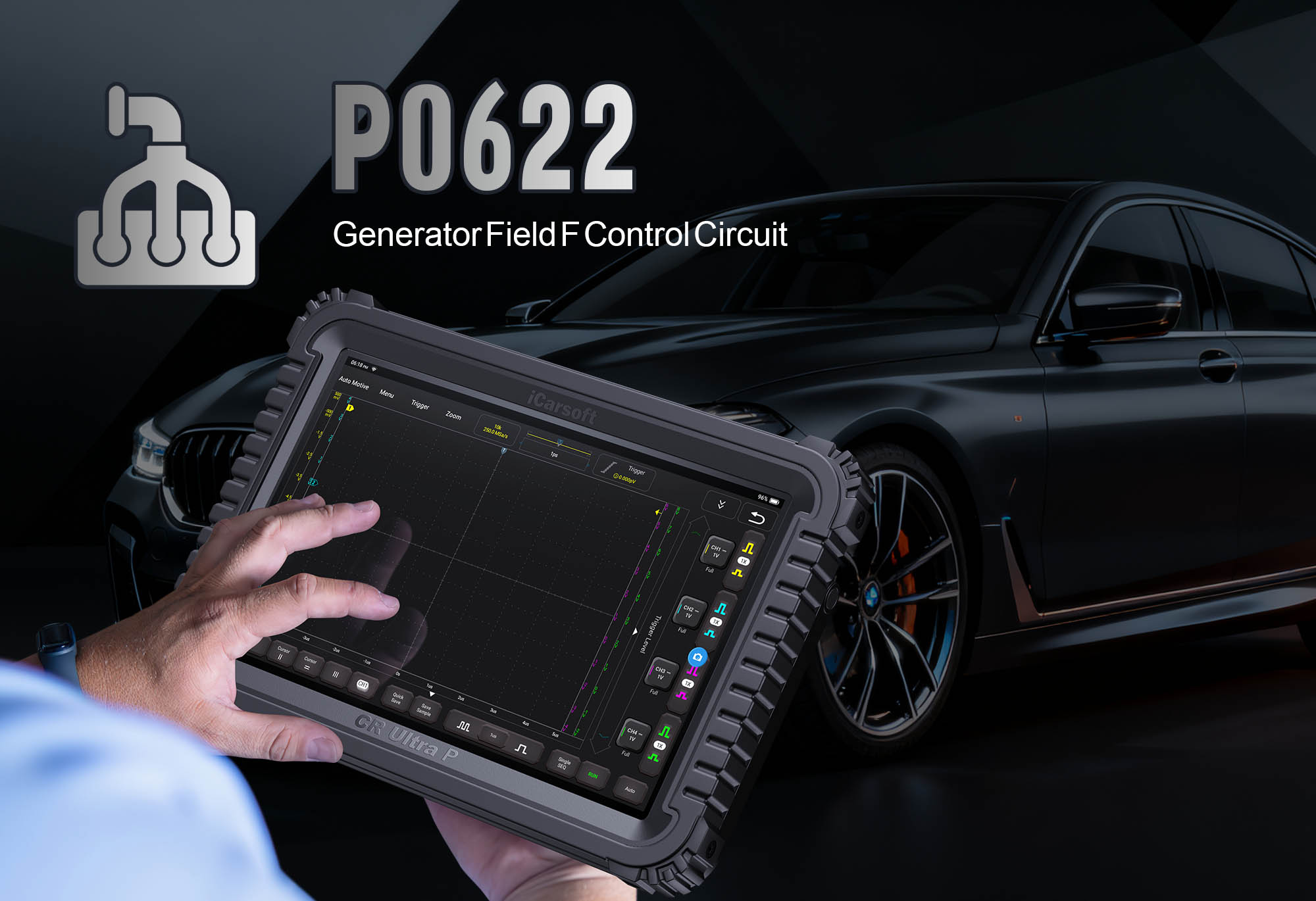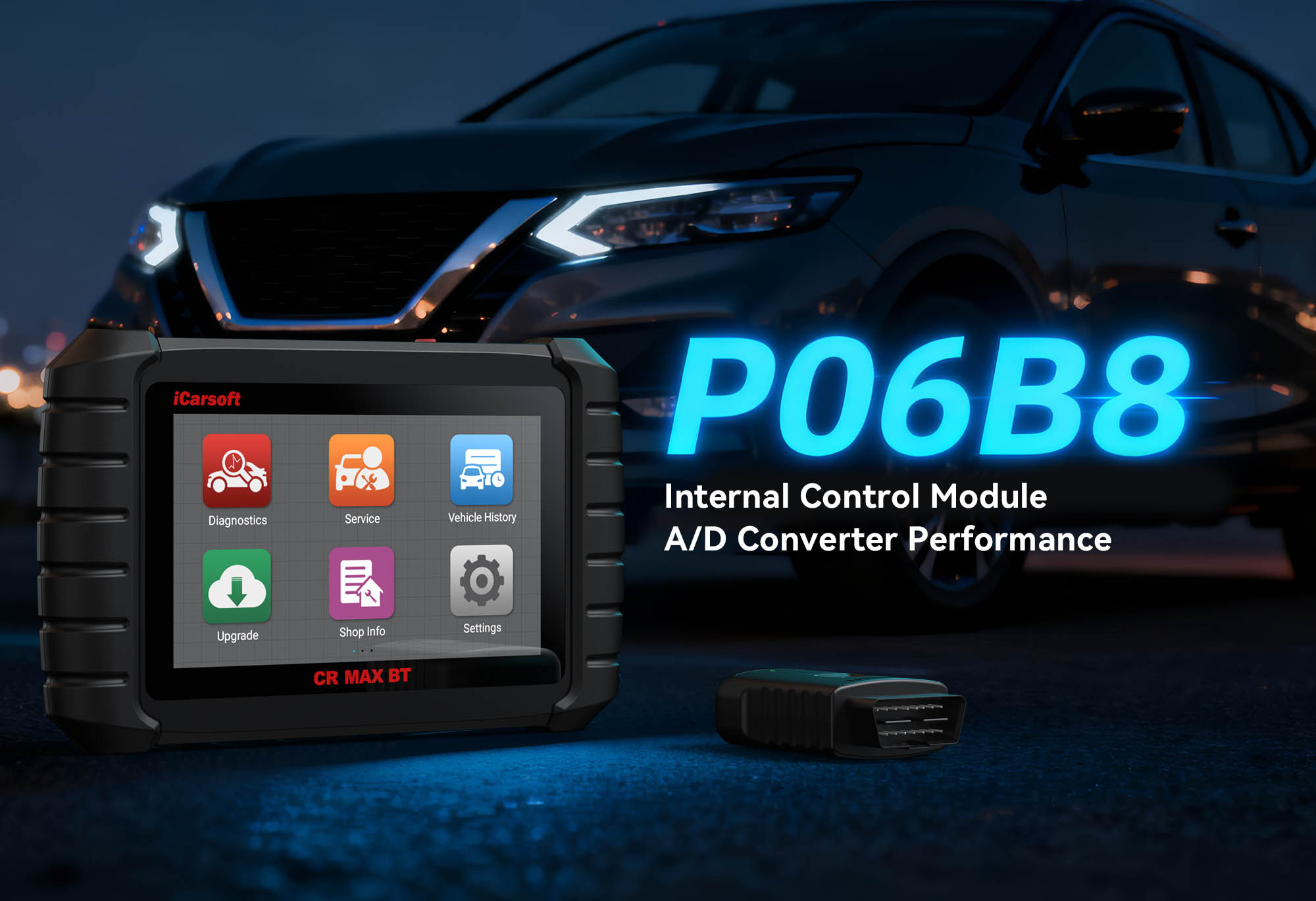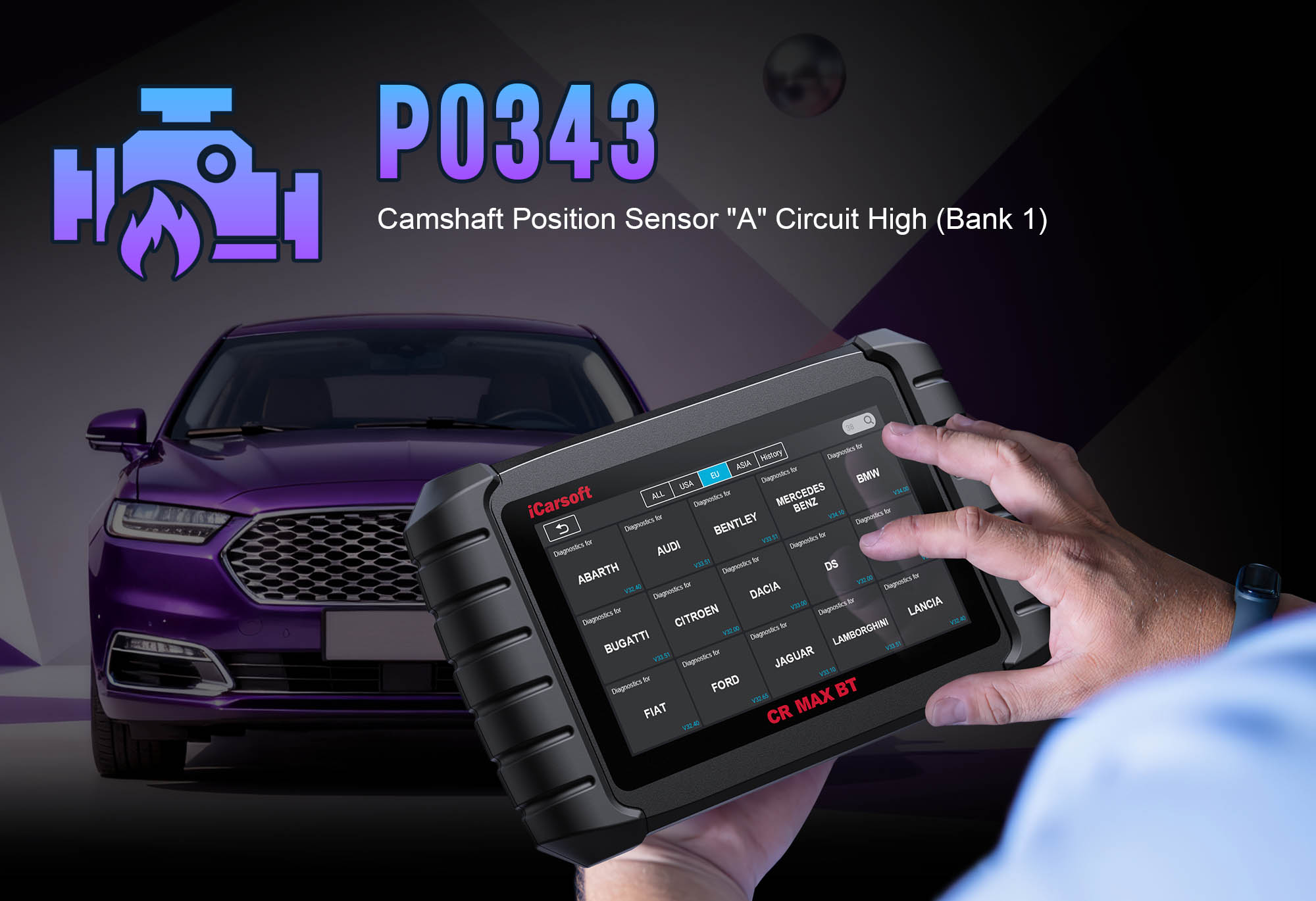Understand & Fix P0622: Generator Field Control Circuit Malfunction with iCarsoft CR Ultra P
If your vehicle’s battery warning light illuminates, you experience electrical system failures, or the engine struggles to start, a diagnostic scan will likely return P0622. This OBD-II code stands for "Generator Field Control Circuit Malfunction"—a critical fault targeting the alternator’s field control circuit. The alternator (generator) charges the battery and powers electrical systems while the engine runs; the field control circuit regulates its output voltage (typically 13.5V–14.5V). When this circuit fails, the alternator can’t maintain proper charging, risking battery drain and electrical system shutdown.
Basic scanners might only flag a "charging system error" but can’t test circuit voltage, verify alternator responsiveness, or diagnose wiring issues—leaving you guessing between a faulty alternator, damaged wiring, or a failing voltage regulator. The iCarsoft CR Ultra P, with its OE-level electrical diagnostics, bi-directional control, and real-time voltage tracking, solves this. Below, we break down P0622, its causes, symptoms, step-by-step resolution, and 8 FAQs to answer common troubleshooting questions.
What Is P0622?
P0622 focuses on the generator (alternator) field control circuit—a system consisting of the alternator’s field winding, voltage regulator (internal or external), wiring harness, and connectors. The field control circuit carries a low-current signal from the Engine Control Module (ECM) or voltage regulator to the alternator, telling it how much power to generate. A "malfunction" means the ECM detects an open circuit, short circuit, or irregular voltage in this path. This prevents the alternator from adjusting its output, leading to undercharging (battery not charging) or overcharging (risk of battery damage).
Key Symptoms of P0622
-
Battery Warning Light: The primary warning sign on the dashboard (often labeled "Battery" or "ALT").
-
Dimming Lights: Headlights, interior lights, or dashboard lights fade when the engine is running.
-
Electrical System Failures: Power windows, radio, or air conditioning work intermittently or stop functioning.
-
Difficulty Starting: A drained battery leads to slow cranking or no-start conditions (especially after short drives).
-
Engine Stalling: If the alternator fails completely, the battery can’t power the ECM, causing sudden stalling.
-
Battery Damage: Over time, undercharging shortens battery life, while overcharging (rare with P0622) can bulge or leak the battery.
Common Causes of P0622
|
Cause
|
Description
|
|
Faulty Alternator
|
A worn alternator with damaged field windings or internal voltage regulator.
|
|
Wiring/Circuit Issues
|
Frayed wires, corroded connectors, or loose terminals in the field control circuit.
|
|
Failed Voltage Regulator
|
External regulators (separate from the alternator) or internal regulator failures.
|
|
Blown Fuse or Faulty Relay
|
A damaged fuse/relay cutting power to the field control circuit.
|
|
ECM Malfunction
|
Rarely, the ECM’s internal driver for the field circuit fails to send proper signals.
|
Why iCarsoft CR Ultra P Excels at Diagnosing P0622
The CR Ultra P outperforms basic tools with features tailored to charging system and circuit diagnostics:
Real-Time Voltage Tracking
Monitors alternator output (13.5V–14.5V) and field circuit voltage, highlighting irregularities that trigger P0622.
Bi-Directional Alternator Testing
Sends field control signals to the alternator to verify output adjustment—distinguishes alternator faults from wiring issues.
Circuit Continuity & Resistance Checks
Tests for open circuits, shorts, and voltage drops in the field control circuit with built-in multimeter functions.
Charging System Topology Mapping
Visualizes components (alternator, wiring, fuse, regulator) for easy fault location.
Global Vehicle Coverage
Supports 200+ brands with 12V or hybrid charging systems.
41 Hot Service Functions
Includes battery test, alternator calibration, and ECM reset—critical for post-repair validation.
Step-by-Step: Diagnose P0622 with iCarsoft CR Ultra P
-
Confirm P0622 & Gather Data
Plug the CR Ultra P into your vehicle’s OBD-II port, power on the tool, and select AutoVIN Identify to auto-detect make, model, and charging system type (internal/external regulator).
Navigate to Engine > Fault Codes > Read Codes to confirm P0622. Tap Code Details for model-specific insights (e.g., "Honda Accord: Generator Field Control Circuit Malfunction; Alternator Output: 12.1V, Expected: 13.5–14.5V; Check Field Wiring or Alternator").
-
Analyze Live Charging System Data
Go to Engine > Live Data > Electrical System and monitor three key metrics:
1. Alternator Output Voltage: Should stay 13.5V–14.5V at idle. Below 13V = undercharging; above 15V = overcharging (rare with P0622).
2. Field Circuit Voltage: Typically 1–5V (varies by vehicle) — 0V = open circuit; fixed high voltage = short.
3. Battery Voltage: Should match alternator output when engine is running (discrepancy = wiring or alternator fault).
-
Test the Alternator & Field Control Circuit
1. Use Bi-Directional Control > Electrical > Alternator Field Test: Send simulated field signals. Check if output voltage adjusts. No change = faulty alternator/regulator.
2. Locate the alternator and field control connector: Use the CR Ultra P’s Component Location tool (alternator typically on front of engine).
3. Inspect & Test: Check for damage, loose belts, or oil contamination. Use the CR Ultra P’s Resistance Test on field winding (should match OEM specs, e.g., 2–5 ohms—infinite resistance = open circuit).
-
Inspect Wiring, Fuses, & Voltage Regulator
1. Wiring Check: Use Continuity Test on field circuit wiring for breaks. Look for damage near moving parts or heat sources.
2. Fuse/Relay Check: Navigate to Vehicle > Fuse Box Diagram (via CR Ultra P) to find alternator-related fuses/relays. Test continuity—replace blown fuses.
3. Regulator Check: Test external regulators for voltage input/output with the CR Ultra P. Internal regulators require alternator replacement.
-
Repair & Clear the Code
- Replace the alternator if tests confirm it’s faulty (use OEM-compatible units for proper voltage regulation).
- Repair damaged wiring, replace blown fuses/relays, or install a new external regulator as needed.
- Use the CR Ultra P to Clear Codes and run a Charging System Validation Test. Test drive and monitor voltage to ensure 13.5V–14.5V is maintained.
FAQs: P0622 Troubleshooting
Can I drive with P0622?
Only short distances—prolonged driving will drain the battery, leading to stalling or no-start. Use the CR Ultra P to diagnose immediately.
How much does it cost to fix P0622?
A new alternator costs $200–$600, plus $100–$250 for labor. External regulators cost $50–$150. The CR Ultra P saves on diagnostic fees ($100–$150).
Why does P0622 keep returning after clearing it?
The root cause wasn’t fixed. Common culprits: unrepaired wiring damage, a faulty relay, or a low-quality replacement alternator. Use the CR Ultra P’s History Log to track recurrence.
Is P0622 caused by a bad battery?
No—a bad battery triggers codes like P0562 (low voltage) or P0563 (high voltage), not P0622. P0622 is strictly a field control circuit/alternator issue.
How do I distinguish between a faulty alternator and wiring?
Use bi-directional testing: Alternator output doesn’t adjust + stable field voltage = faulty alternator; Alternator output doesn’t adjust + 0V field voltage = wiring/fuse fault.
Do I need to reset the ECM after alternator replacement?
Yes—use the CR Ultra P’s ECM Reset function to sync the new alternator with the vehicle’s electrical system. This ensures proper voltage regulation.
Can extreme temperatures cause P0622?
Yes—cold weather can make wiring brittle (leading to breaks), while heat can damage the alternator’s internal regulator. Use the CR Ultra P’s Voltage Test to check for weather-related issues.
Will P0622 affect my vehicle’s emissions?
Indirectly—if the battery drains completely, the ECM can’t run emissions controls. Fix P0622 with the CR Ultra P to avoid related emissions failures.
Conclusion
P0622’s generator field control circuit malfunction threatens critical electrical systems, but the iCarsoft CR Ultra P simplifies diagnosis with real-time voltage tracking, bi-directional testing, and circuit checks. It ensures you fix the root cause—whether it’s a faulty alternator, damaged wiring, or a failed regulator—instead of just clearing the code.
With a 10.1-inch HD touchscreen, 12600mAh long-life battery, and 3 years of free software updates, the CR Ultra P is a must-have for DIYers and mechanics. Resolve P0622, restore charging system function, and avoid costly battery damage—all with one professional-grade diagnostic scanner.





